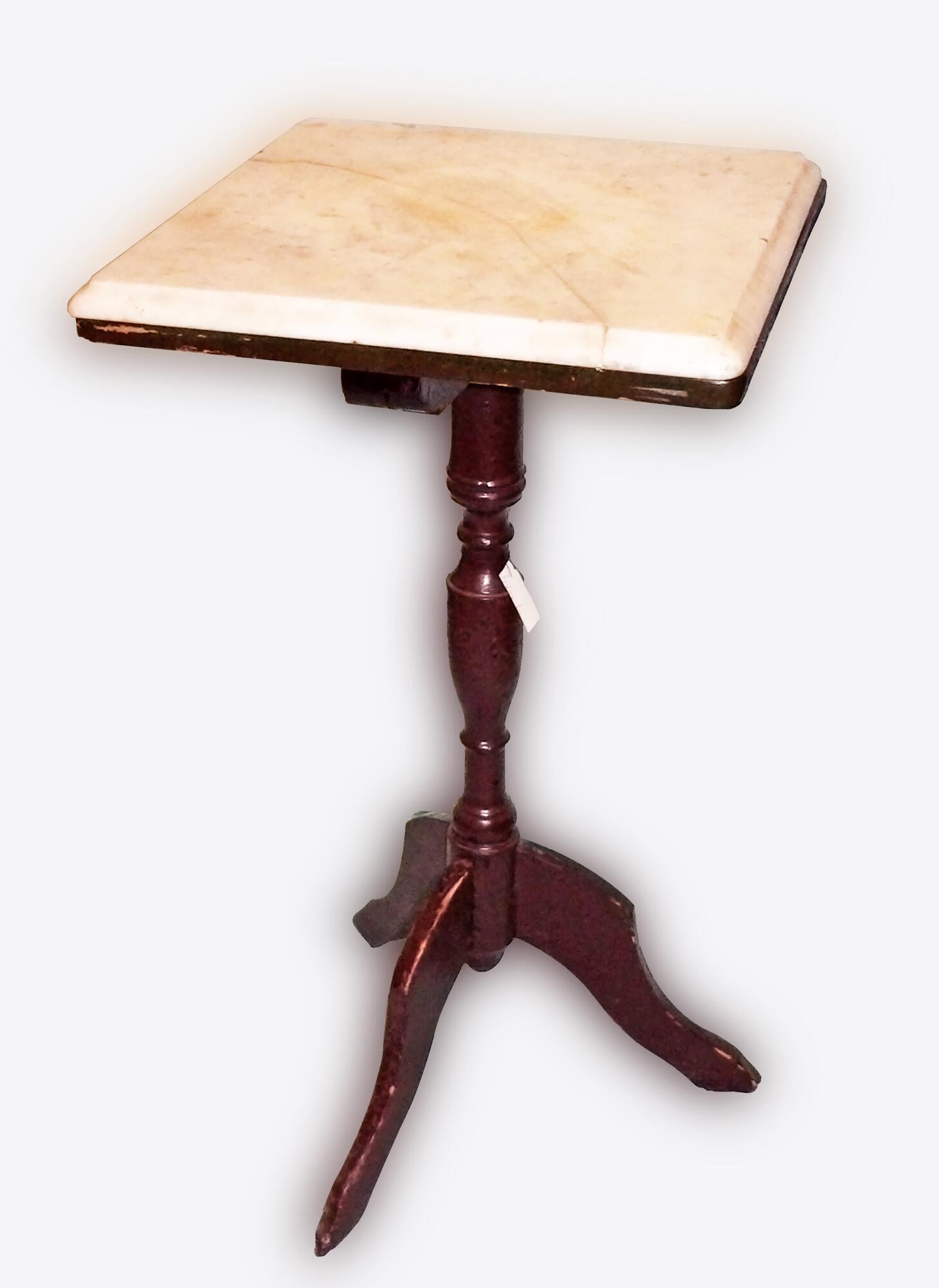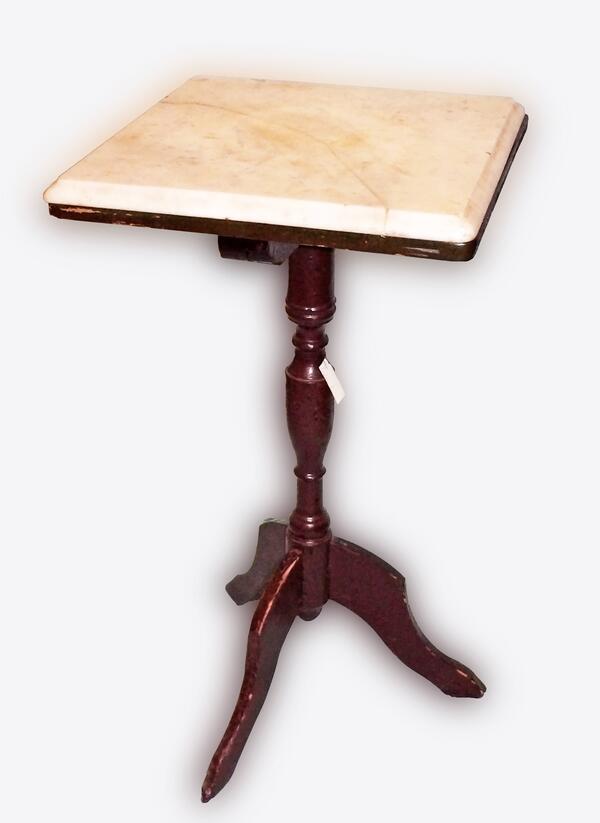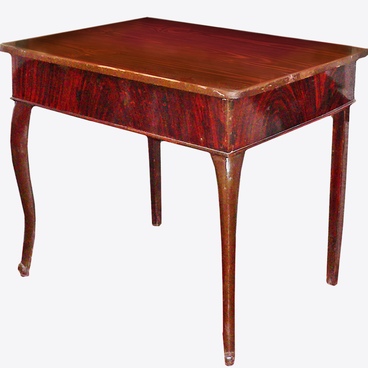The collection of the Kótlas Museum of Local Lore contains this old wooden three-legged table. On a chiseled base with a marble top, it was made by craftsmen in the eclectic style popular during the last quarter of the 19th century. It was used as a stand for figurines, vases, candlesticks, lanterns, or just to decorate the interior.
This table was likely built in the city of Kádnikov by the master cabinetmakers Sokrovin and Orlov, as well as sourced by foresters Pópov-Vvedénsky, Stratilátov, and Súmkin. A thin, aesthetic table leg splits into three legs for stability — shorter, and carved from wood. The craftsmen made the square tabletop in two parts: the lower part is wooden, and the upper tabletop is covered with a marble slab of Italian origin. The craftsmen have rounded the corners of the table top, keeping its square shape. The wooden part of the table was covered with dark brown paint and varnished.
Three-legged tables were popular during the Georgian period of English history from the early 18th century to the first third of the 19th century. During this time, the English master of furniture art Chippendale created examples of high quality mahogany furniture, combining both aesthetic and functionality.
This table belonged to the Chetverúkhin family of merchants of the first guild, who lived in the city of Kádnikov, Vológda province. Evgeny Chetverúkhin’s daughter Alexandra married Kadnikóvsky mayor and merchant Grigory Flyágin. They had a son, Ivan. Ivan would go on to marry a schoolteacher, Nadezhda Póstnikova, after which the newlyweds lived in the Chetverúkhins’ large two-story house, which they had inherited.
After Nadezhda’s husband died, she, together with her sister Elena Póstnikova, also a teacher, moved to a new place of residence — the Odintsóv merchants’ house, the top floor of which had previously been purchased by Ivan Flyágin. They sold the Chetverúkhins’ house, and all the furniture remained with the Póstnikov sisters.
The sisters bequeathed their property to Nikolai Dedushénko, a music teacher, watchmaker and tuner of musical instruments, who worked with them at school. He intended to open a historical memorial apartment for repressed teachers. Later, Dedushénko brought a portion of this antique furniture to Kótlas and donated it to the collection of the local history museum.
This table was likely built in the city of Kádnikov by the master cabinetmakers Sokrovin and Orlov, as well as sourced by foresters Pópov-Vvedénsky, Stratilátov, and Súmkin. A thin, aesthetic table leg splits into three legs for stability — shorter, and carved from wood. The craftsmen made the square tabletop in two parts: the lower part is wooden, and the upper tabletop is covered with a marble slab of Italian origin. The craftsmen have rounded the corners of the table top, keeping its square shape. The wooden part of the table was covered with dark brown paint and varnished.
Three-legged tables were popular during the Georgian period of English history from the early 18th century to the first third of the 19th century. During this time, the English master of furniture art Chippendale created examples of high quality mahogany furniture, combining both aesthetic and functionality.
This table belonged to the Chetverúkhin family of merchants of the first guild, who lived in the city of Kádnikov, Vológda province. Evgeny Chetverúkhin’s daughter Alexandra married Kadnikóvsky mayor and merchant Grigory Flyágin. They had a son, Ivan. Ivan would go on to marry a schoolteacher, Nadezhda Póstnikova, after which the newlyweds lived in the Chetverúkhins’ large two-story house, which they had inherited.
After Nadezhda’s husband died, she, together with her sister Elena Póstnikova, also a teacher, moved to a new place of residence — the Odintsóv merchants’ house, the top floor of which had previously been purchased by Ivan Flyágin. They sold the Chetverúkhins’ house, and all the furniture remained with the Póstnikov sisters.
The sisters bequeathed their property to Nikolai Dedushénko, a music teacher, watchmaker and tuner of musical instruments, who worked with them at school. He intended to open a historical memorial apartment for repressed teachers. Later, Dedushénko brought a portion of this antique furniture to Kótlas and donated it to the collection of the local history museum.



